Last-Minute NYC Holiday Gift Guide 🎁
We’ve created a holiday gift guide with presents for the intrepid New Yorker that should arrive just in time—


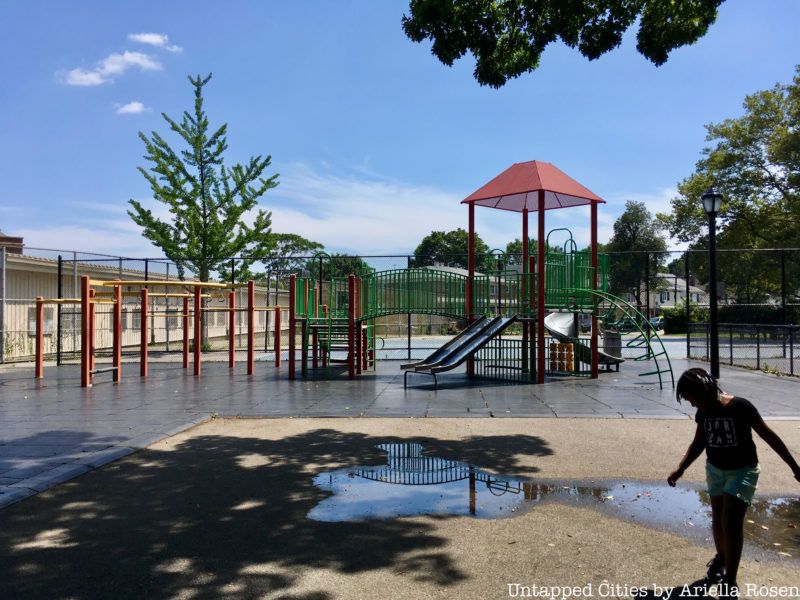
Wayanda Park in Queens Village, Queens.
For all but the most paranoid of parents, cemeteries and death are perhaps the furthest thing from the mind of someone watching children swinging on monkey bars or happily running through a sprinkler. There are however, a number of playgrounds around New York City (and many more parks) that are built above burial grounds.
When it comes to building on top of graves, there is a fine line between memorialization and desecration. But what if the playground is the memorial? Some communities have embraced their playground’s legacy while others are only just discovering it, but each of these former cemetery tells a unique story of what the neighborhood was like hundreds of years ago and how the ever-changing city became what it is today.
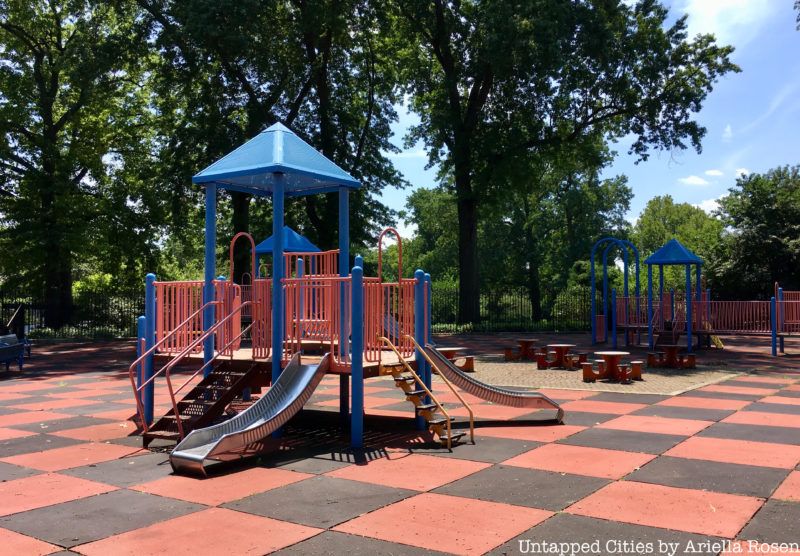
The Olde Towne of Flushing Burial Ground (formerly Martin’s Field) is a memorial park on the site of the Colored Cemetery of Flushing. An active cemetery from 1840 until 1898, it was a public cemetery where many victims of the cholera and smallpox epidemic were buried. Later, it served as the final resting place of many members of the African Methodist Episcopal Church. There may be as many as 1,000 people buried under the park. An investigation in 1996 found that over sixty percent of those buried there are of African decent, and more than half are children under the age of five.
In 1936, WPA workers, under the leadership of Parks Commissioner Robert Moses, developed the site and turned it into Martin’s Field Playground. The large playground, which covered the entire burial ground, featured a wading pool, a baseball field, and a handball court, in addition to see-saws and swing. When they dug the wading pool, workers reported finding “bones galore,” as well as pennies that had been used to cover the eyes of the dead. There were only four tombstones still standing at the time, however, so the Parks Department moved forward with the project since there was no way to identify the vast majority of the remains.
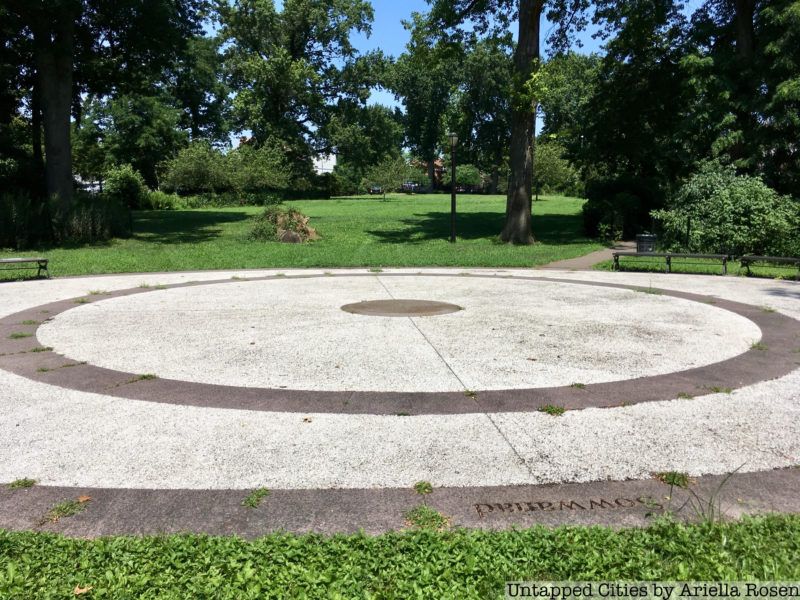
A memorial in The Olde Towne of Flushing Burial Ground honoring the dead who are buried there.
In 2004, as part of a major restoration project, the city built a new, smaller (and safer) playground on the northernmost part of the old cemetery. The rest of Martin’s Field was turned into a landscaped memorial park that honors the memory of the people buried beneath it while also serving the local community. The Parks Department took care not to disturb any of the graves when it built the new playground. The park’s name was changed to “The Olde Towne of Flushing Burial Ground” in 2009.
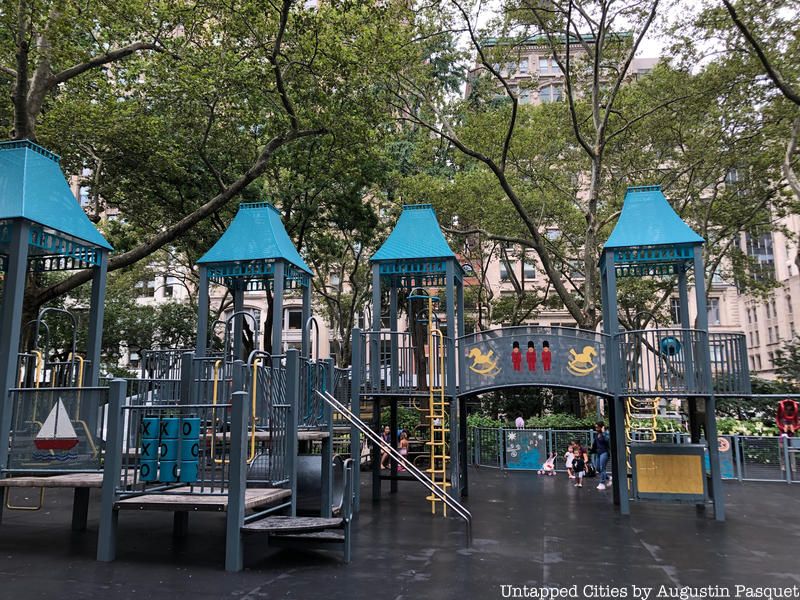
The land now known as Madison Square Park served as a New York City’s Potter’s Field from 1794 to 1797. Although hundreds of people were buried there (there are bodies beneath the park even today), the three years of use as a cemetery are not the park’s only legacy. A new phase of Madison Square Park’s existence began in 1986, nearly 200 years after the Potter’s Field closed, when a children’s playground was added to the northern part of the park as part of a major renovation project.
In March 2012, the playground was dedicated to Police Officer Moira Ann Smith, who lost her life on September 11, 2001. Officer Smith selflessly entered the second tower of the World Trade Center again and again to evacuate people as the building collapsed. As a result of her heroic actions, hundreds of lives were saved that day. It is quite fitting, therefore, that she should be memorialized with a playground built on top of a cemetery. While the playground is inescapably linked to death, it is also a monument to life, bravery, and the resilience of a city that rebuilds but also remembers.
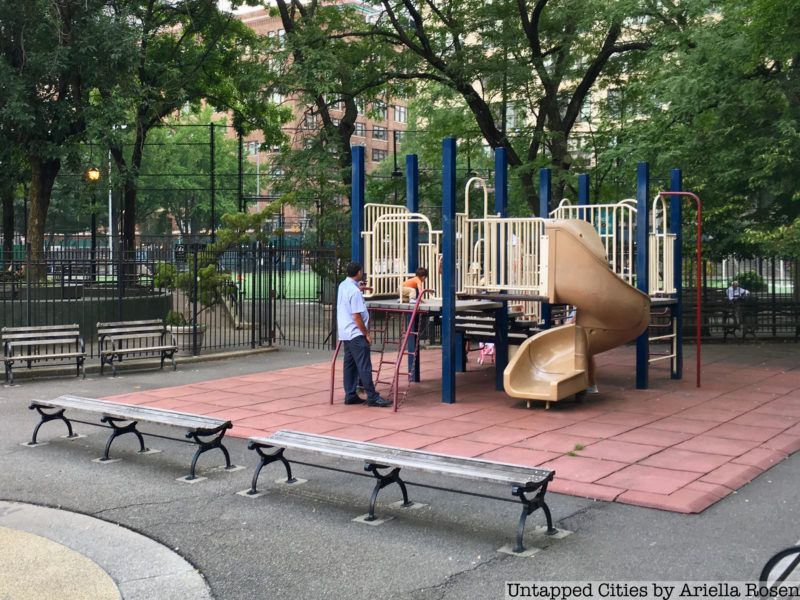
From around 1800 to 1851, John’s Chapel of Trinity Church laid approximately 10,000 people to rest in St. John’s Burying-Ground, which occupied the land between Hudson, Leroy, and Clarkson Streets in Manhattan’s Greenwich Village. The graveyard was a favorite spot of Edgar Allen Poe, who lived nearby in a wooden house at 113 Carmine Street in the 1830s. It was a quiet, restful spot, and Poe liked wander between the graves as he thought.
In 1895, the New York City Parks Department acquired the land with plans to turn it into a public park. Family members were given a year to remove their dead, but the vast majority of the bodies were never claimed. Hudson Park (renamed James J. Walker Park in 1947) opened in 1898. Playground equipment was added in 1903 at the urging of Charles Stover and the Outdoor Recreation League, making it one of the first municipally funded playgrounds in the city.
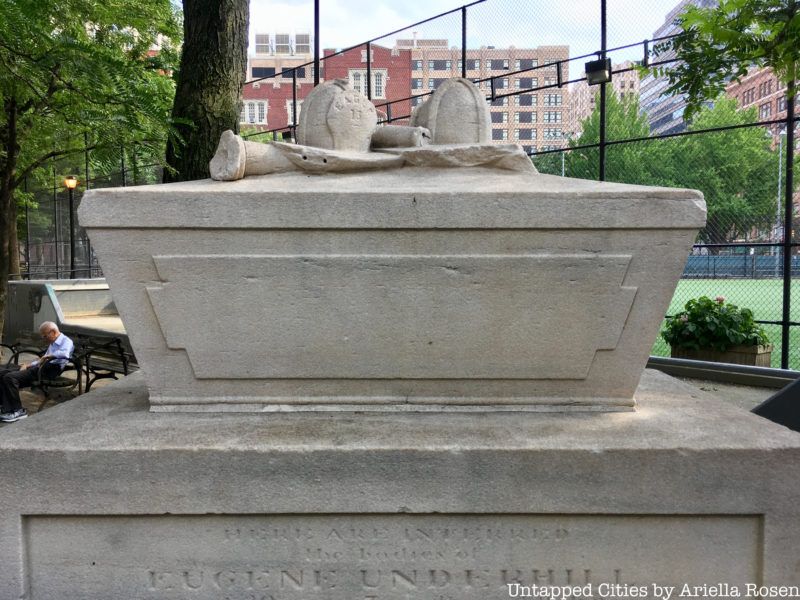
By the 1940s, the playground had been expanded, a pool had been dug, and a baseball diamond had been installed. Where the tombstones once stood, children now climb on jungle-gyms and gather for pickup games of soccer. The only indication of the park’s history as a cemetery and of the bodies that have rested beneath the park for hundreds of years is a monument erected in 1834 by Eagle Fire Engine Company No. 13 to honor the memory of Eugene Underhill and Frederick A. Ward, who died on their first day on the job when a building fell on top of them.
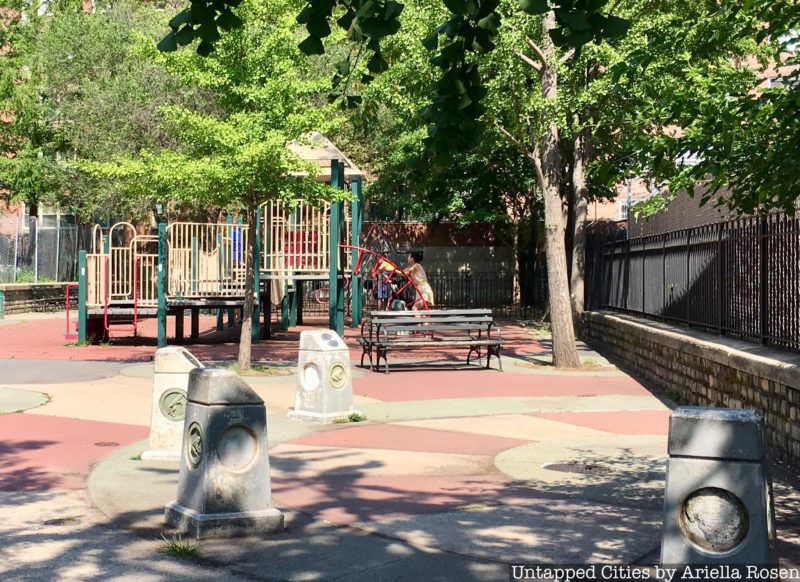
When the Village of Newtown (known today as Elmhurst) in Queens was settled in 1652, the land now occupied by Newtown Playground was set aside for use as a cemetery. For over 160 years, the Old Newton Cemetery was the only public cemetery in town. Among those buried there were members of such prominent families as the Fishes and Moores. After the cemetery closed around 1880, however, it began to suffer from neglect––one local farmer even used the land as a pasture for his cows and horses.
In 1915, when the city made plans to cut through the cemetery in order to extend Toledo Street (92nd Street) and install a sewer there, the locals started a campaign to get the city to turn the burial ground into a park so that the historic site could be spared. The cemetery was, in fact, transferred to the Park Department of Parks in 1917, but only after the extension of Toledo Street was completed. The first playground equipment was installed ten years later. Before construction began, the remaining 86 headstones were laid flat on the graves they marked and covered over with soil, although some people report that the graves were ground into pieces and mixed with the cement used to build the wading pool.
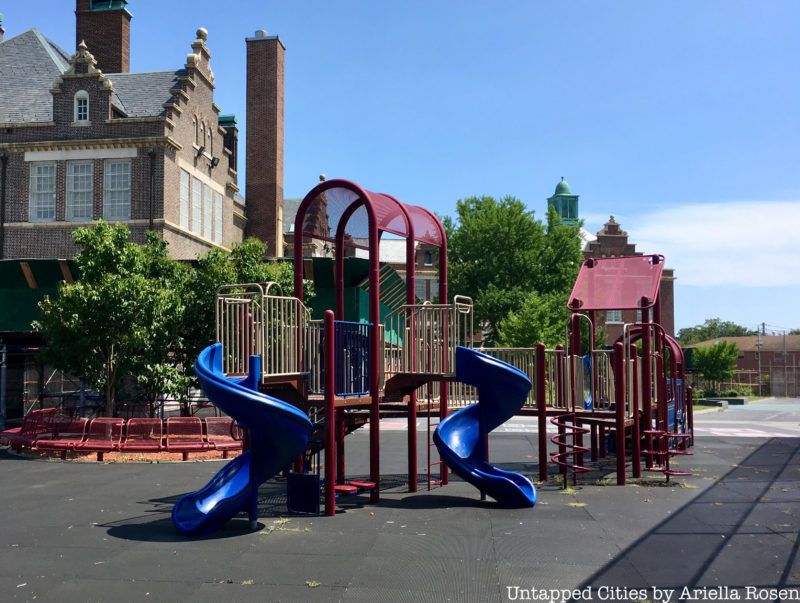
From as early as 1737, the land bounded by Hollis Avenue, Springfield Avenue, and Robard Lane was a Potter’s Field shared by the seven original towns in Queens County. As a burial ground for paupers and criminals, this cemetery was never intended to be a place for memorials and visitation. Wooden stakes took the place of tombstones and the dead held onto their identity only so long on the stakes remained: once the wood rotted away, a new grave could be dug on the site.
After the Queens County Cemetery closed around the turn of the twentieth century, the residence of the local neighborhood petitioned the government to have the site turned into a park. Without any gravestones, the transition was simple and Wayanda Park opened in 1912. Situated directly behind P.S. 34, the playground is jointly operated by the Parks Department and the Board of Education. The name “Wayanda” is thought to be a variant of the Native American word for “the place of happy hearts.” Aside from the sign posted by the Parks Department, the name is the only tribute to the dead interred beneath the playground, despite the human remains that were found under the park in 2002.
Next, check out Surprise! What NYC’s Former Cemeteries Are Now and NYC Unearthed: 5 Notable Archaeological Sites in Manhattan.
Subscribe to our newsletter